
We feel deeply honored and grateful every time we enter a spectacular cave. When we do, we feel as if we are given a chance to go back thousands of years to a place’s past. We feel lucky and privileged to see and experience secret ecosystems and hidden natural wonders that have existed long before humans roamed the earth. And in the impenetrable darkness and silence, we rediscover solace, peace, and humility buried deep in the chaos of our hearts.
Halsema Highway
After visiting the Banaue Rice Terraces, it was time to move on to our primary destination in the pine-covered hills of Sagada. To get there, we have to traverse the 150-kilometer Halsema Highway in the Mountain Province. This infrastructure project was named after Eusebius Julius Halsema, an American Engineer who became a mayor of Baguio City in 1920.
At 2,255 MASL, it is the highest highway in the country. No wonder this place is perennially wet and foggy.
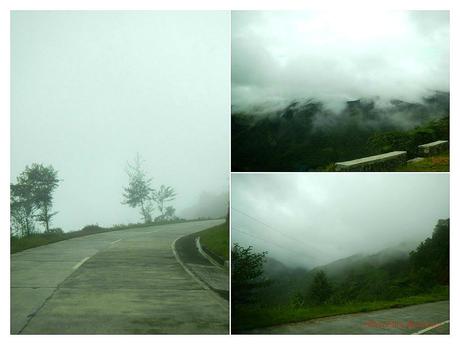
But more than being the Philippine’s highest highway, it is also one of the 25 most dangerous highways in the world due to these massive and unexpected landslides. Edzel, our guide, told us that these deadly landslides happen frequently during the rainy season, which makes traversing the highway during a rainy day involves considerable risk.
Aside from landslides, there are other factors that make the Halsema Highway extremely dangerous. Asphalted portions become slippery when wet. In addition, steep inclines and declines coupled with sharp turns can cause drivers to lose control of their vehicle, which makes them careen off the road and into deep ravines. Many people have lost their lives here.
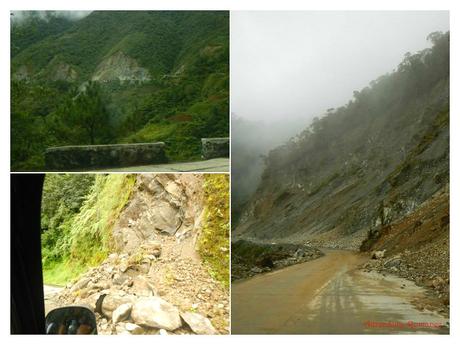
As we left Banaue and entered into the Mountain Province, we stopped by this tiny community to buy ingredients for our meals and to drink some mountain-brewed coffee to ward off the cold. Just check out those healthy, green, and leafy vegetables! They’re very affordable in this part of the province.
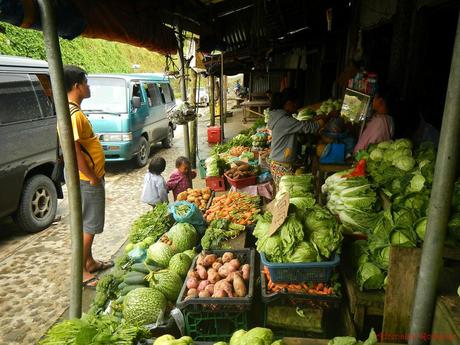
After taking a 30-minute break, it was time to continue this long journey. Deadly as it may be, the Halsema highway provides indescribably breathtaking views of the Mountain Province. Much of these mountains and valleys are unexplored; so many of Mother Nature’s secrets are safely nestled here.
The Halsema highway started out as a very long foot trail so natives in the Mountain Province can transport their harvests and wares to Baguio. Today, much of the Halsema highway is paved.
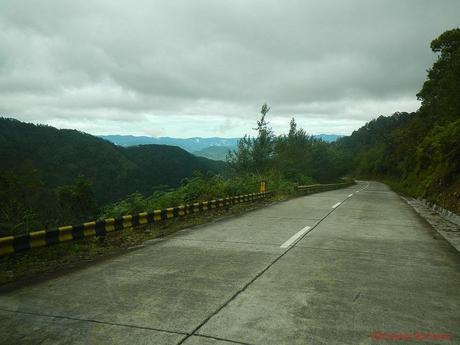
Ancient pine trees stand guard over the mountain. We also noticed that there are no coconut trees here. It was quite curious considering that most of the mountains we climbed have coconut trees adorning their slopes.
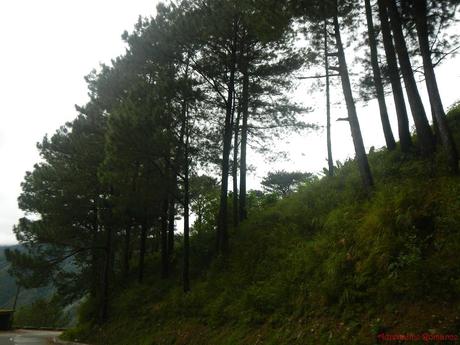
Terraces seem to be constant geographical features in the Mountain Province. The ones in the photo below are terraces with retaining walls made of rock. Daises and sunflowers are grown on the steps.
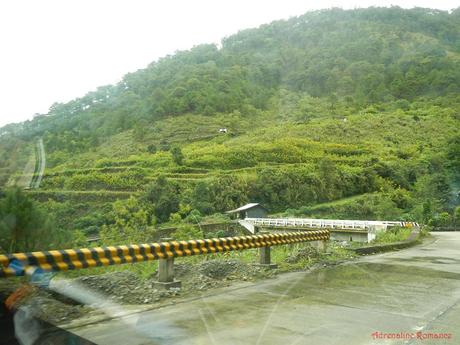
After another hour of road travel, we finally reached the town of Bontoc where we had a late lunch. We know the food was delicious, but our exhaustion was dampening our palate. Nevertheless, we were still all smiles.
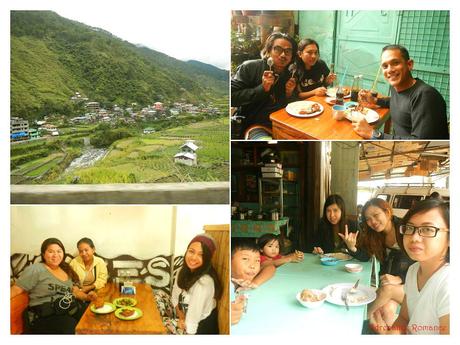
We departed Bontoc at almost 2 PM and ascended up the mountain again. Without the fog and with a clear afternoon shining through, the beauty of Mountain Province was displayed before us. That’s an offshoot of the mighty Chico River at the bottom of the valley. Chico River, by the way, is Luzon’s answer to the Cagayan de Oro River and is a favorite whitewater rafting destination.
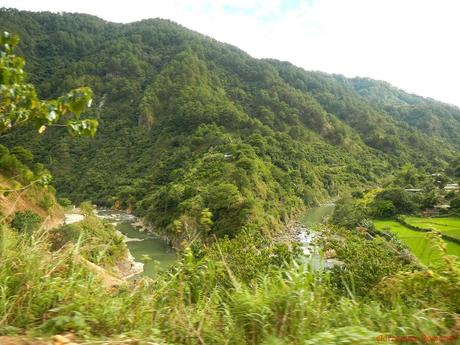
Nearing Sagada, we saw entire communities perched on mountainsides. It is evident that these people consider mountains as very important entities of their history and culture.
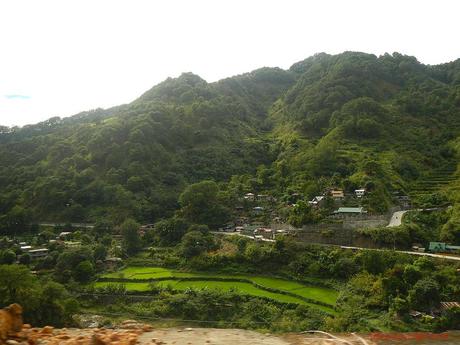
After almost 19 hours of traveling, we finally reached our homestay in Sagada, which is a lovely multi-story home perched at the side of a verdant hill.
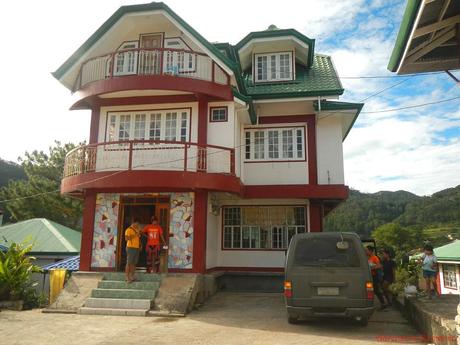
At the other side of our homestay is this gorgeous hill filled with magnificent limestone karsts. Sweetie and I wished that these were in our backyard so we could do rock climbing every day. Hehehe!
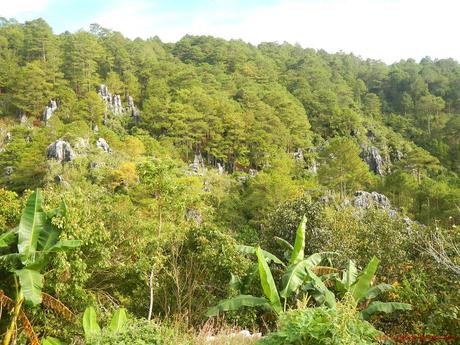
After resting a bit and taking a shower, we changed into our adventure clothing for our first real adventure of this tour, a trek inside Sumaging Cave deep inside the bowels of Sagada. We had a thorough briefing, and Edzel assigned us a local guide.
After the briefing and a short prayer, we were on our way.

Lumiang Cave
Before proceeding to Sumaging Cave, we took a left turn and followed a dirt trail that led deep into a forest filled with agoho trees. The air here was cool, refreshing, and had a tinge of pine scent.
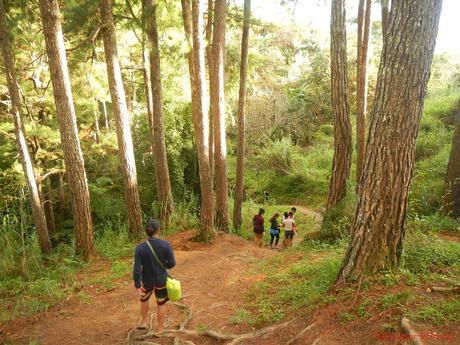
At the end of the dirt trail was the cavernous entrance to Lumiang Cave. For an extra fee, one can explore the depths of this dark underworld. Our guide said that it takes four to five hours to complete an extreme adventure from Lumiang Cave to Sumaging Cave. Yes, the two caves are connected to each other.
Sweetie and I would have loved to shell out and explore the cave, but we have non-adventurers and young children with us. For safety purposes, we opted to just explore Sumaging Cave, which is easier for everyone.
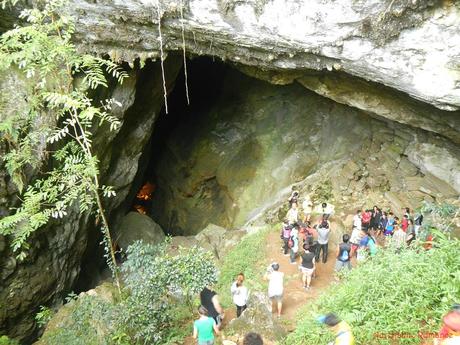
A mossy cliff act as borders to the cave’s entrance.
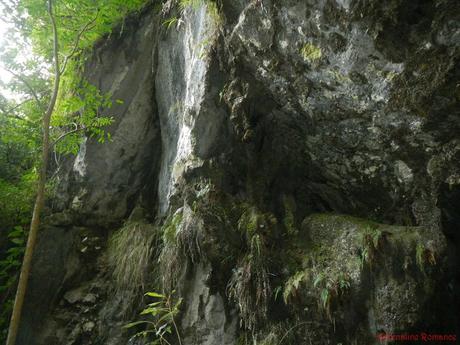
Lumiang Cave is actually an ancient burial site. These coffins, many of them hundreds of years old, are stacked at the entrance of the cave. We understood its meaning; ancestors who were at the twilight of their lives wanted to be close to where they originated—the earth itself.
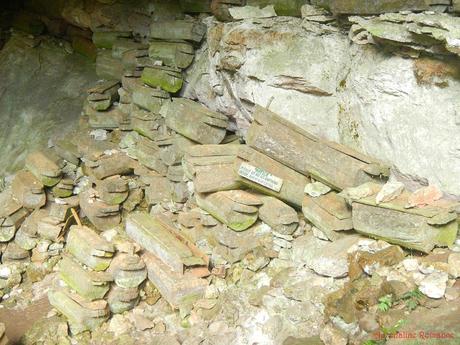
Some of the older coffins feature intricate designs that are carved into the wood.

On the way back to the road, we saw this incredibly beautiful forest-covered cliff—a potential crag for sport or trad climbing.
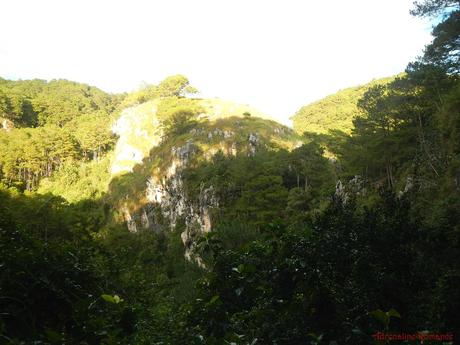
After huffing and puffing and fighting gravity during the steep ascent, we finally reached the road. A few minutes of resting, and we were on our way to Sumaging Cave.

Sumaging Cave
From the road, we saw one of Sagada’s most extensive rice fields, the verdant Kapay-aw Rice Terraces. The terraces spread to the far reaches of the valley.

At around 4:30PM, we arrived at the road entrance to Sumaging where we registered our names and donned on our headlamps. Take note of the rules of caving and follow them.
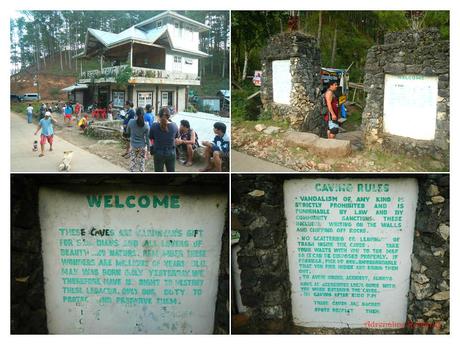
We made a simple video so you could see a glimpse of our fantastic Sumaging Cave adventure.
The adventure started with a descent towards the cave’s mouth which is hidden under a dense forest cover.
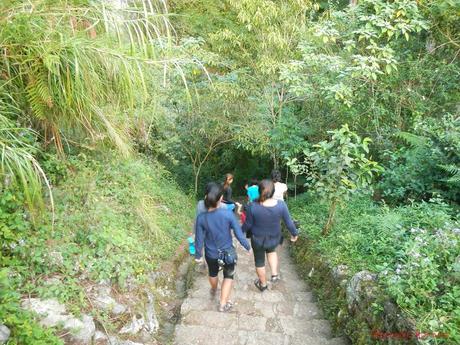
After 5 minutes of constant descent, we arrived at the cave’s mouth. The lengthening shadows of the afternoon made the cave look more foreboding.
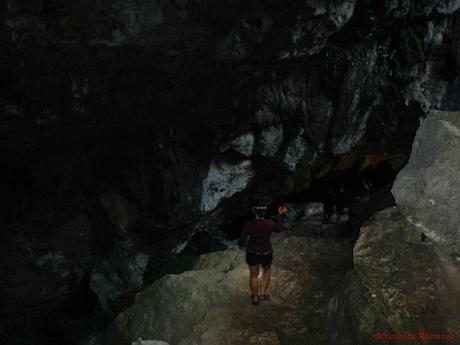
At the Sumaging Cave’s entrance, our guide conducted a re-briefing while fellow guides lit up their kerosene lamps. We thought that our headlamps were sufficient, but all that all changed when we saw how bright these humble kerosene lamps are. In addition, the lamp’s yellow light greatly enhanced the natural color of the rock formations.
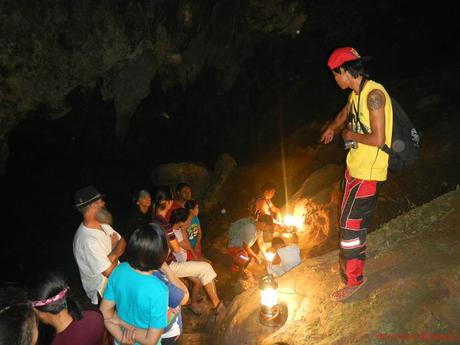
Gingerly and carefully, we started going down into the depths of Sumaging Cave. We needed to be careful here as the rocks are quite slippery.

Right from the start, we saw astounding rock formations that have been sculpted by Mother Nature eons ago.
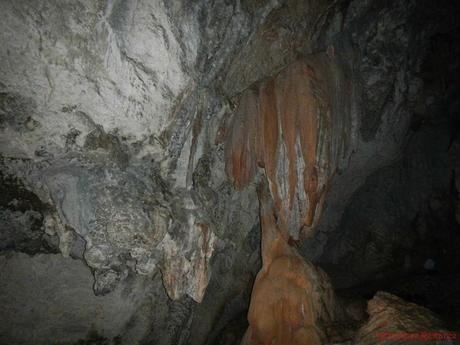
Deeper and deeper we went. At this point, our guide said we were more than a hundred feet below street level. Wow!
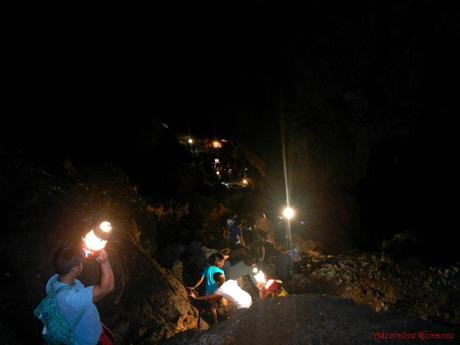
Here’s a steep, slippery, muddy, and tricky section of the cave. Using fixed ropes and a makeshift ladder made of old tires are required for making a safe descent.

The rocks felt wet due to the mud from other people’s shoes. However, some rock sections feel slimy rather than wet. It turned out that the slime is actually fresh guano, or bat droppings. Yuck!
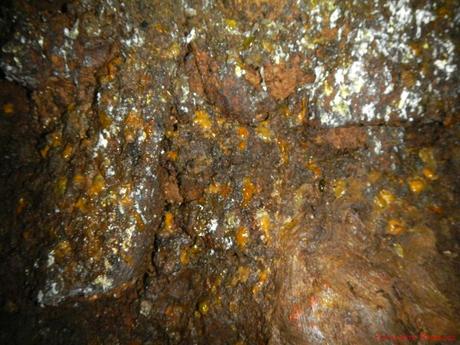
Now that is really deep, isn’t it? Even though we were descending on a roughly straight line and that Sumaging Cave’s entrance is cavernous, we could not see daylight from our point of origin. The pitch black void was only broken by pinpricks of kerosene lamps carried by guides far above us.

(Photo by Agnes Amor)
Eerie and untouched rock formations cling to the cave’s walls. These are homes of bats and swifts who call this cave their home.
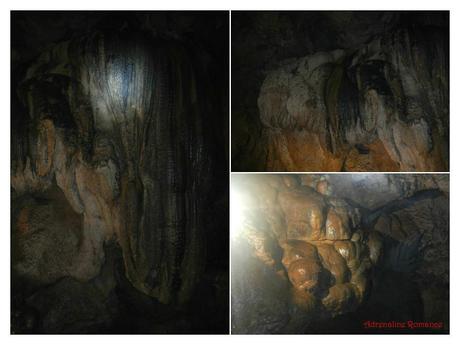
The beauty of Sumaging Cave started to unravel as we neared its heart. Just check out this beautiful curtain of orange colored limestone.
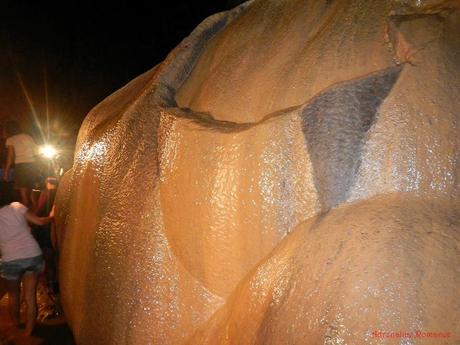
Natural pools of fresh, cold water are found all over the place. Many of these pools are just knee-deep, but there are some whose depths are uncharted.
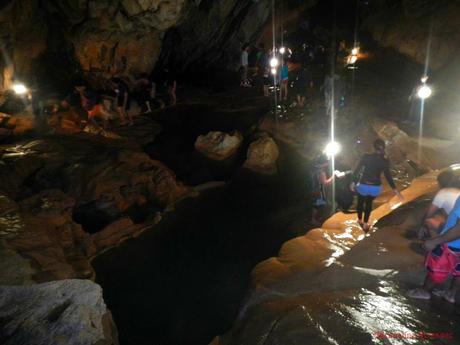
Cold rainwater that seeps into the ground feeds the pools, using the rock formation as funnels. Minus the noise of tourists, the only sounds you’ll probably hear here are the chatter of thousands of bats perched high above the cave roof and the splash of water. Alas, those days of darkness and pure solitude are rare ever since Sumaging Cave opened to tourists.
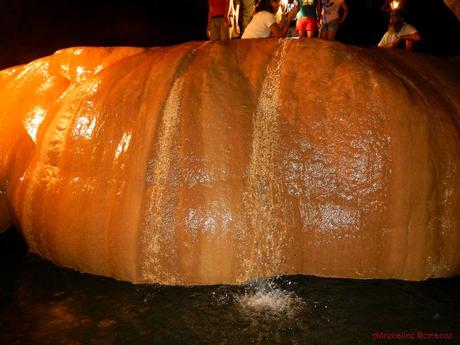
We waded towards a deeper section of the cave. The water swishing on our feet was definitely refreshing.
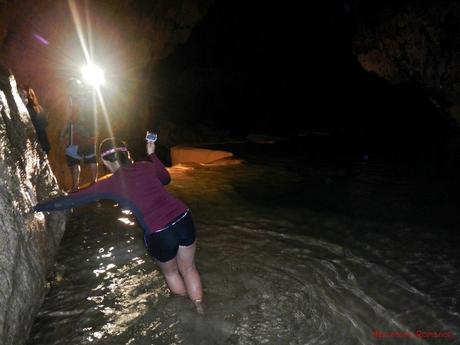
Accessing the bottom part of the cave requires a little bit of technical climbing. Good thing that there is a fixed rope that visitors could use to safely descend or ascend this section of Sumaging Cave. We still had to be careful here as one slip can send us careening over the edge and slamming into the hard rock below.
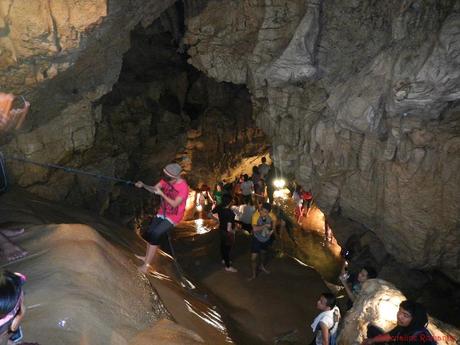
Whoa! Just check out that. Locals call this major cave feature The Royal Curtain as the formation looks similar to the drapery often found behind a king’s throne. Technically, The Royal Curtain is some sort of flowstone, formed by millennia of accumulated mineral deposits.
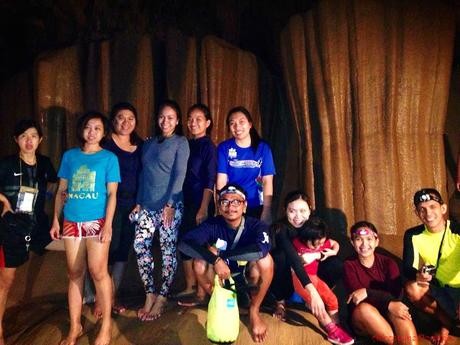
(Photo by Agnes Amor)
Getting to the very bottom of the cave required some teamwork. There were no fixed ropes, and each one had to lend a hand to ascend and descend the vertical flowstone.
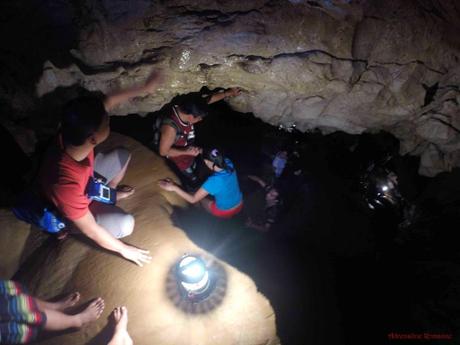
Finally, after more than an hour of descending, we were finally at the heart of Sumaging Cave, which comprises of gorgeous flowstones and pools of crystal clear water. At this point, our guide said we were 350 feet below street level!
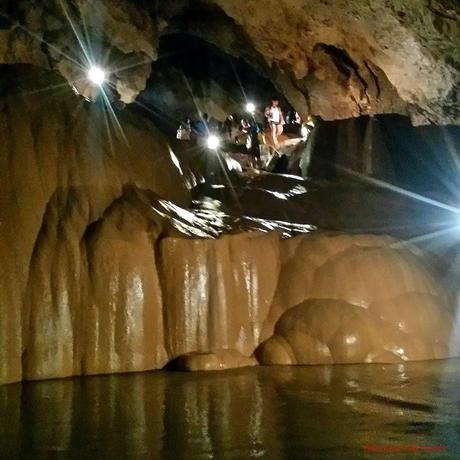
(Photo by Merline Tubog)
Fossilized seashells at the bottom of the cave prove that millions of years ago, this area is underwater.
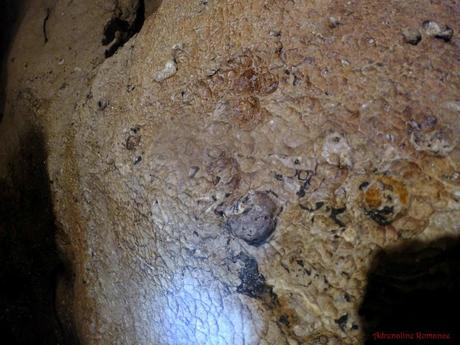
We were just mesmerized at these stunning flowstones at the bottom of Sumaging Cave. Water still flows down these stones, so in a few millennia, these formations will change shape. Can you imagine just how skillful and patient an artist Mother Nature is?
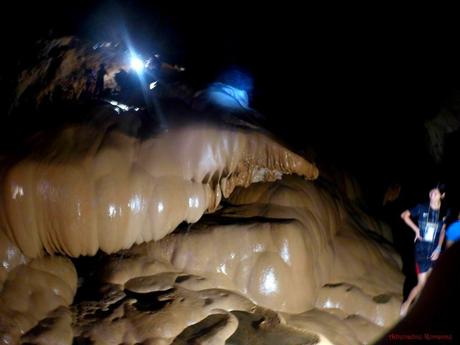
After spending more than three delightfully dark hours in Sumaging Cave, our tummies began to rumble. By the time we got to the street, it was already 7:30 PM, and the temperature has dropped down significantly. With our clothes soaked and damp, the chilly mountain air bit to the bones.
It took us almost an hour to hike uphill to our homestay, but it was all worth the effort because Edzel prepared a hot, filling dinner for us.
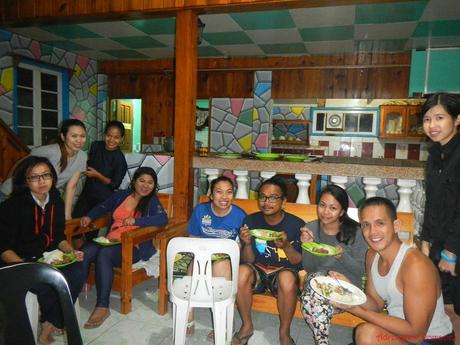
Despite our 19-hour on-the-road ordeal and exhaustion, our adventure inside Sumaging Cave was excellent. It was a great way to introduce us to the wonders of Sagada.
Tips to follow

